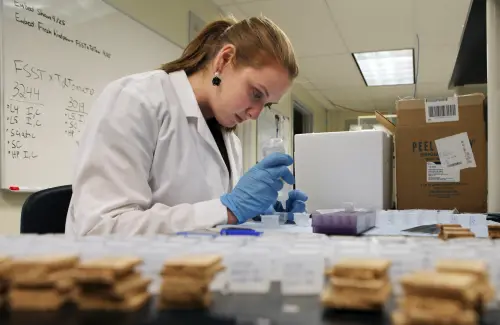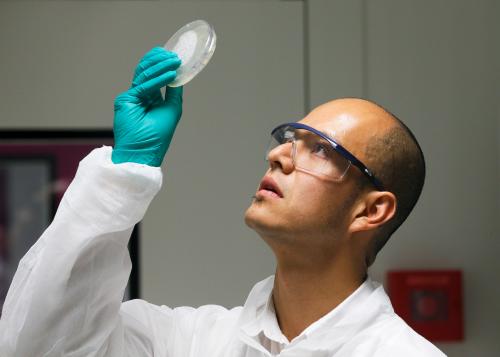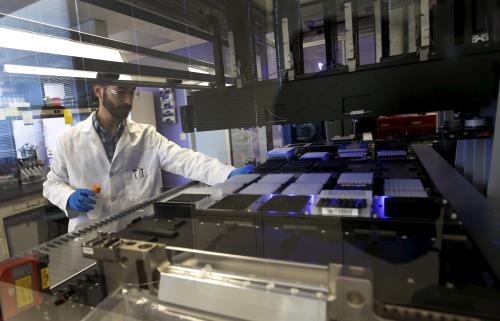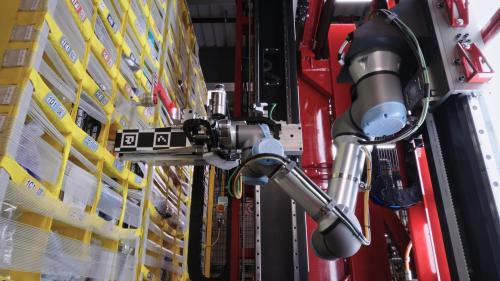While the recent court decision awarding the hotly-contested CRISPR patent to the Broad Institute might accelerate product development and investment in gene editing technologies, government regulations still mandate that genetically engineered (GE) products be safe for humans, animals, and the environment.
Last year, the U.S. Department of Agriculture provoked controversy by choosing not to regulate a new white mushroom engineered to resist browning because the CRISPR-cas9 gene-editing tool used lay outside of existing regulations. The presiding biotechnology regulations only granted the USDA jurisdiction over genetically engineered plants created by introducing foreign DNA through bacteria or viral vectors that were known plant pests, methods commonly employed in the 1980s and 1990s.
New rules for new techniques
The emergence of new GE products prepared with tools not covered by existing regulations prompted the Obama administration to release the 2017 Update to the Coordinated Framework for the Regulation of Biotechnology in early January. The Framework seeks to clarify the scope of regulated biotechnology products, and define agency regulatory roles to reduce uncertainty and unnecessary costs.
Left to draw lines in the sand on particular categories of GE products, the Food and Drug Administration, Environmental Protection Agency, and USDA have submitted a number of regulatory changes for public comment that might have large implications for biotech R&D. The proposals intend to create a flexible regulatory system to ensure all GE products are assessed for safety, and remove unnecessary burdens limiting economic growth and innovation.
Adjusting oversight to manage unnecessary costs
For example, mosquitoes that are genetically engineered to control pest population and the spread of diseases qualify for regulation as a new animal drug under the FDA and a pesticide product under the EPA. This redundancy has caused confusion and unnecessary costs among the federal agencies and developers navigating the regulatory process. The new proposal seeks to separate these roles and ensure that developers work with the agency containing both the regulatory authority and technical expertise to evaluate new products properly. Under the draft guidance, all GE products intended to limit or eliminate mosquito populations would be designated pesticides. The EPA would evaluate the environmental impact of these mosquito population control tools, while the FDA would evaluate products that limit disease transmission or modify mosquitoes in non-lethal ways.
Another FDA draft guidance expands the agency’s definition of new animal drug to include any intentional modification to an animal’s DNA that manipulates its structure or function. The new proposal worries developers who previously planned to avoid FDA review because their product’s safety had already been demonstrated and was not directly affected by the gene modification, such as milk produced by cattle genetically engineered to be hornless. There is debate whether the proposed regulation is necessary, since the FDA recognizes milk as safe and the gene mutation to produce hornless dairy cattle already exists in nature among beef cattle. The new rule would expand the agency’s oversight of genetic modifications that reduce harm to humans or animals but do not directly relate to product safety, increasing the pool of new products that require FDA approval.
Biotech developers are also concerned about a proposed rule from the USDA that might limit competition and innovation in GE plant research. While the USDA refused to regulate the white mushroom because the product was not prepared with genetic materials from known plant pests, the new regulation would evaluate all GE organisms that pose a plant pest or noxious weed risk. The draft guidance notes that the previous method of regulating the source of the genetic material, rather than GE product itself, has been ineffective and not led to new plant pests. The proposal would allow the USDA’s Animal and Plant Health Inspection Service (APHIS) to regulate GE plants with traits that have not previously undergone risk assessment.
The proposed rule would also exclude certain classes of GE products from regulation if the gene modification is also possible using traditional breeding methods. This change would most notably exclude gene modifications that only delete genes or introduce naturally occurring DNA from a sexually compatible organism. This exclusion would expedite product development for plants where a small DNA deletion enhances crop viability, such as rice engineered to resist bacterial infection. Alternatively, crops packed with multiple copies of a favorable gene already in their DNA to increase physiological expression would also avoid regulation. Small companies might focus their research and capital on these product areas to avoid APHIS risk assessment and move directly to market.
What the New Regulations Missed
The proposed changes enable the agencies to regulate unforeseen advancements in genetic engineering, but they present new challenges to their long-term effectiveness. While the proposal granting EPA oversight over mosquito products will avoid redundancy, the rule should be generalized to ensure efforts to limit animal populations do not cause similar issues between the EPA and the FDA. New needs and applications for these revolutionary gene-editing tools will soon emerge, and regulations should clearly indicate agency jurisdiction over similar animal population management efforts.
The expanded FDA regulation on new animal drugs might limit innovation in small companies unable to finance costly safety assessments. The FDA should adopt a policy similar to the USDA proposed amendment that balances protecting plant health with promoting innovation. The agency can achieve this balance by regulating new traits and excluding certain modifications. As emerging techniques for detecting DNA mutations at non-target locations validate the safety of GE products, the FDA’s broadened jurisdiction will only burden developers financially.
The proposed changes promise to both increase regulation in some GE product categories and decrease regulation in others. While they add flexibility to governing new gene editing technologies, further adjustments would instill clear regulatory processes to protect health and promote innovation in biotechnology.
Dan Bernstein contributed to this post.
The Brookings Institution is committed to quality, independence, and impact.
We are supported by a diverse array of funders. In line with our values and policies, each Brookings publication represents the sole views of its author(s).









Commentary
New biotech regulations require balance of safety and innovation
March 3, 2017